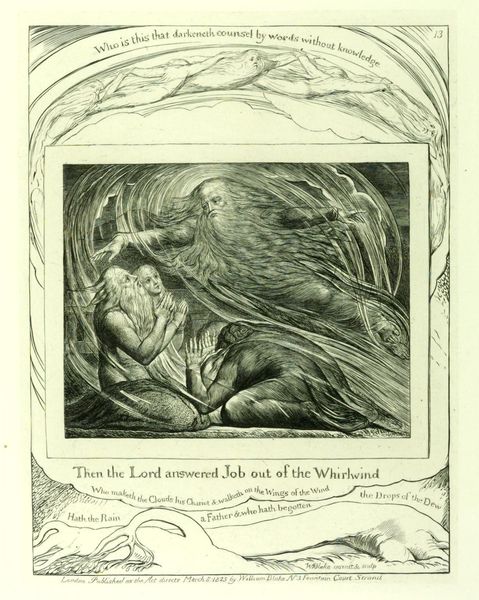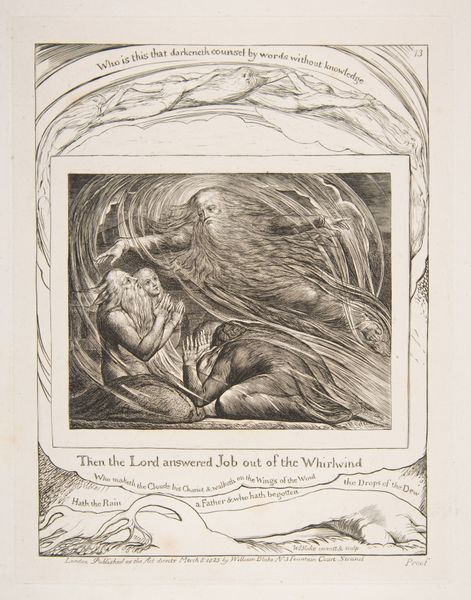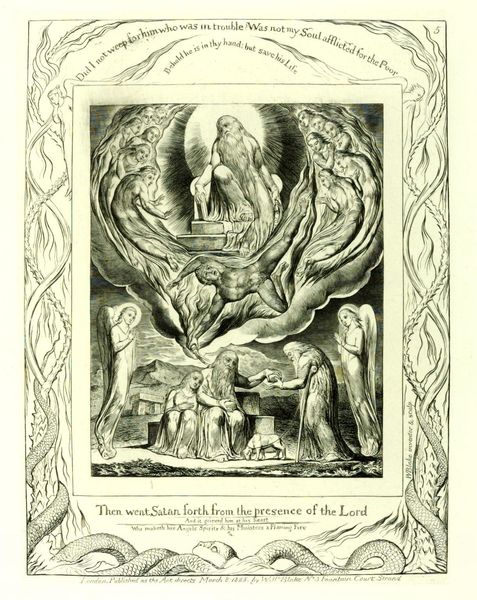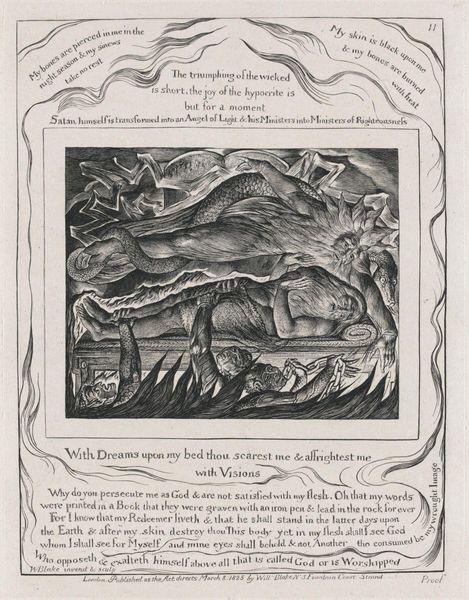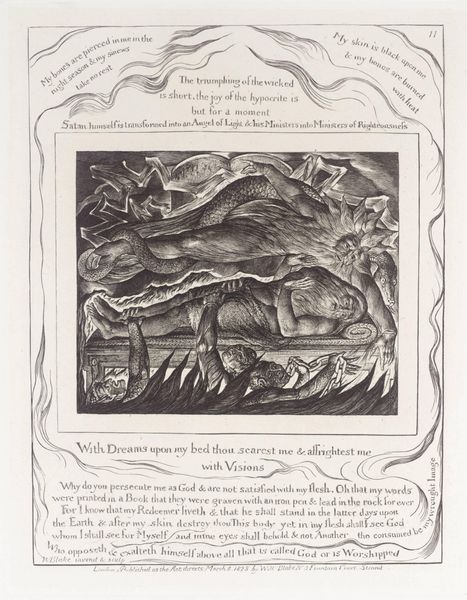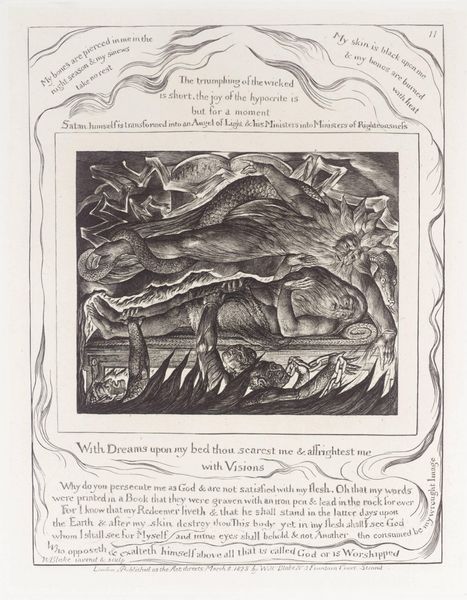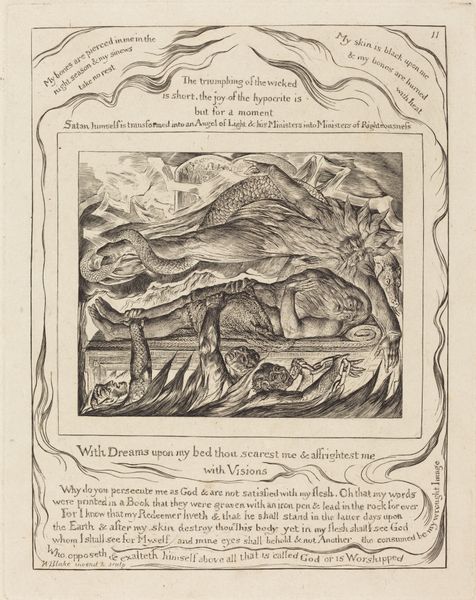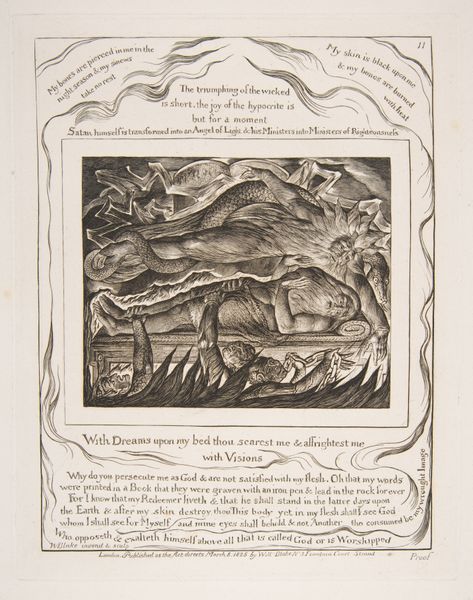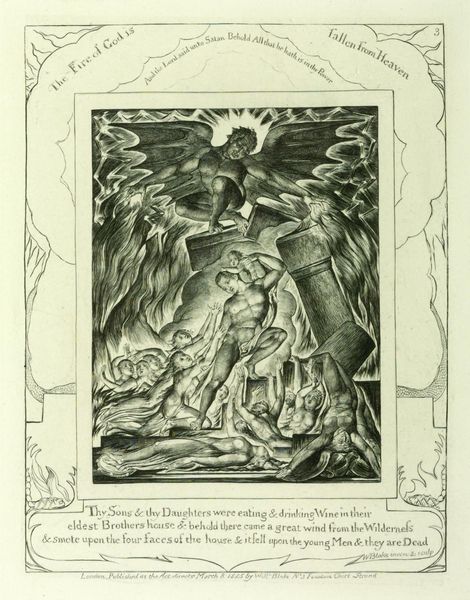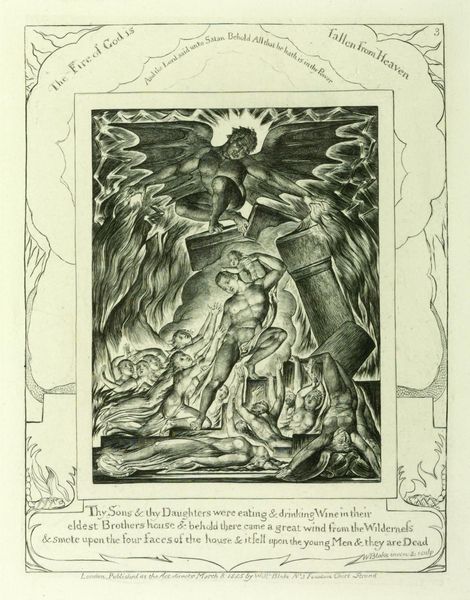
Dimensions: image: 198 x 151 mm
Copyright: CC-BY-NC-ND 4.0 DEED, Photo: Tate
Curator: William Blake's "The Lord Answering Job out of the Whirlwind," currently residing in the Tate Collections, evokes a feeling of intense divine power. Editor: Yes, the swirling lines and dramatic contrast immediately suggest overwhelming force, perhaps even terror. One can almost feel the wind. Curator: Blake was a master printmaker. This particular piece, like much of his work, demonstrates his intricate engraving technique. Notice how the dense network of lines creates both form and a sense of movement. Think of the labor involved in achieving this effect. Editor: And consider how this technique reflects the religious and political climate. Blake's individual printing process allowed him to bypass the established art institutions of his time, enabling him to disseminate his radical religious and social views directly to a wider public. Curator: A striking point. Blake’s engagement with the book of Job is a fascinating demonstration of the dialogue between craft and scripture. Editor: Exactly. And how that dialogue found its audience is a testament to the power of accessible art. Curator: This print offers a lot to unpack. Editor: Indeed, a powerful convergence of labor, faith, and revolutionary spirit.
Comments
tate 7 months ago
⋮
http://www.tate.org.uk/art/artworks/blake-the-lord-answering-job-out-of-the-whirlwind-a00024
Join the conversation
Join millions of artists and users on Artera today and experience the ultimate creative platform.
tate 7 months ago
⋮
This is an illustration of the opening words of chapter 38 of the Book of Job. Blake quotes them in the main title of the print. The Lord appears and asks Job a series of questions, opening with 'Where wast thou when I laid the foundations of the earth?' The clockwise action of the Lord's appearance in the whirlwind permeates the whole of Blake's image. The trees in the bottom margin are bent low by the force of the wind, but, like Job in his adversity, they remain unbroken. Gallery label, August 2004
